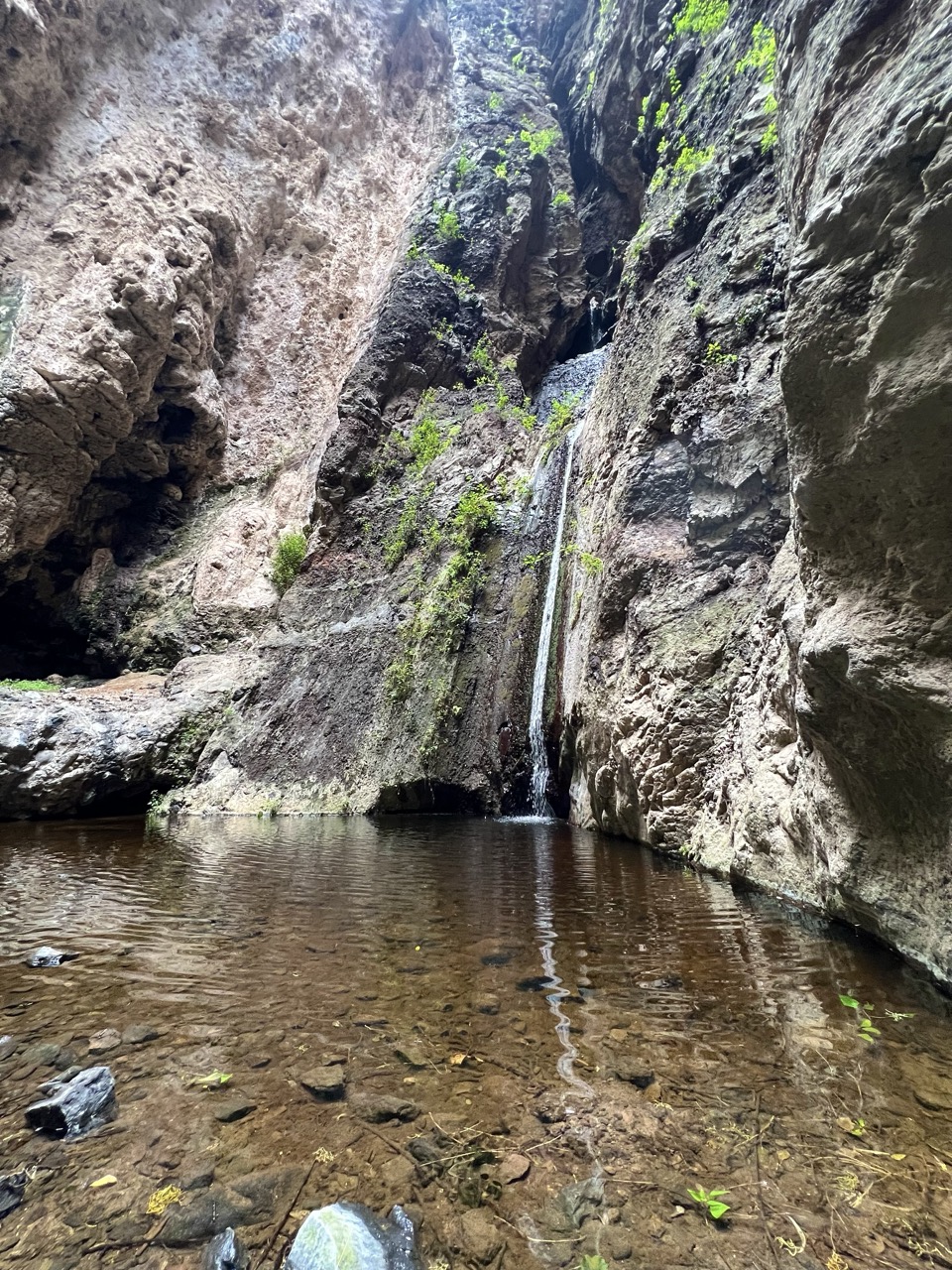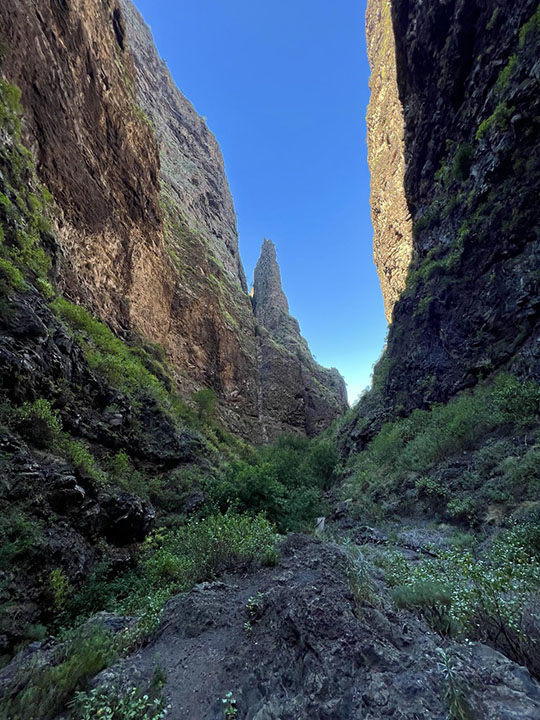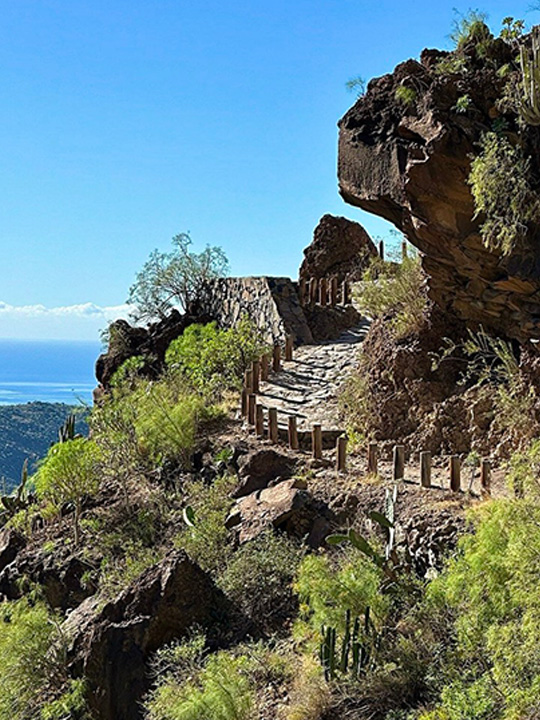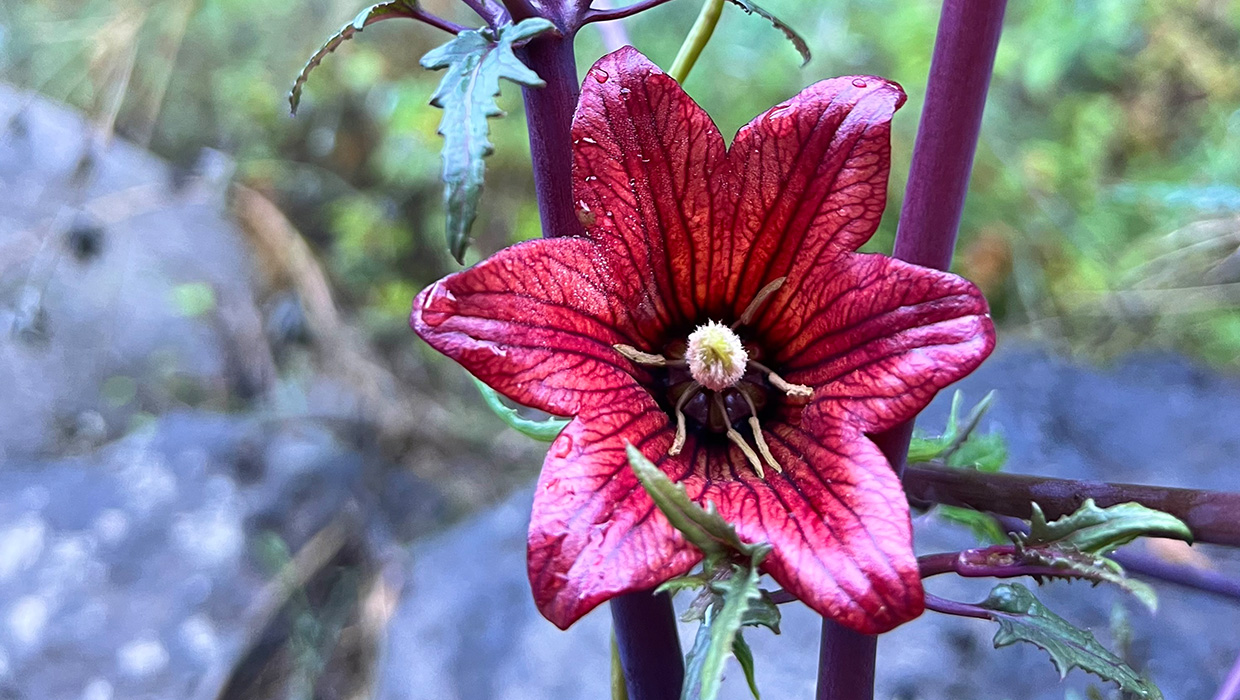
The Barranco del Infierno, which takes its name from its abrupt nature, is a Protected Natural Area that together with other ravines and rocks in the area, constitute the Barranco del Infierno Special Natural Reserve.
The route of this trail begins at 350 m above sea level, in the municipality of Adeje, in a place that is a natural balcony with magnificent views of the southern landscape of the island.
This trekking excursion will take us approximately three and a half hours, between the round trip, and the total distance will be approximately 6500 meters. With a medium-low difficulty, it is advisable to have appropriate footwear for slippery and rocky terrain.

Access hours from 06/01 to 09/15.

Access hours from 09/16 to 05/31.

Park Schedule

Recommended duration



altitude

of Length

Species

Persons/30 minutes



We will start from the highest part of the Calle de los Molinos, following the old shepherd’s path, we will pass by a series of points enabled as viewpoints, some beehives and an old mill and as we advance we will walk along the bed of the ravine, which narrows inward and its vertical walls seem to close on the walker.




The altitudinal landscape ranges from 100 to 1300 meters approximately, which conditions rainfall and temperatures that vary as we ascend in altitude. The same is true for vegetation. In the lower parts we find formations of cardonal and tabaibal while in the middle zone we can find remains of thermophilic forest where we can find hawthorn trees, almácigos, dragon trees, wild jasmines and even some palm trees and in the highest areas we can find pine forests whose main element is the Canary pine that coexists with some bushes such as the escobón, always above 600 meters above sea level.
The reserve is also home to a rich and diverse fauna, both in vertebrates and invertebrates, a richness that is evident due to the considerable variety of endemic species in both terrestrial and aquatic forms. Among the vertebrate fauna there are more than 40 localized species. The group of birds of prey that can be observed flying over the place is represented by the common kestrel, the harrier, the raven and the sparrow hawk among the diurnal birds and of the nocturnal ones it is worth mentioning the short-eared owl that takes advantage of the hollows of the terrain to establish its nests. We can also find other types of birds such as the turtledove, hoopoe, unicolor swift, robin, partridge and canary among others.
The Natural Reserve boasts remarkable biodiversity, hosting numerous species of vertebrates and invertebrates, many of them endemic to the Canary Islands, inhabiting both terrestrial environments and watercourses. Among vertebrates, more than 40 different species have been identified. Birds of prey are particularly prominent, including the common kestrel, booted eagle, raven, and Eurasian sparrowhawk, along with the long-eared owl, which nests in the crevices of the cliffs. Other frequently seen birds include the Barbary partridge, wild canary, hoopoe, European turtle dove, plain swift, and European robin, all of which are key components of this protected area’s ecosystem.
